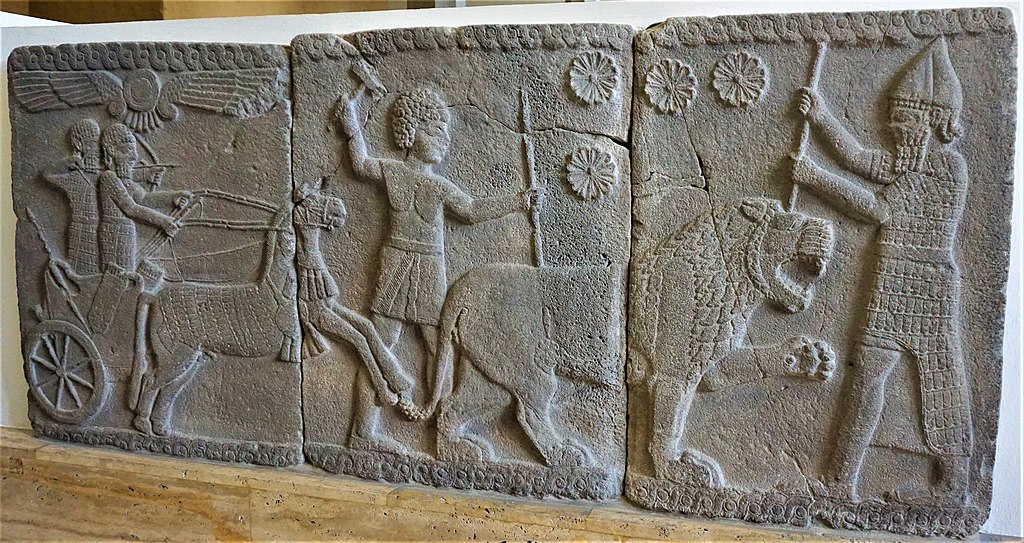
This Lion Hunting Scene from about 750 BC was created in the Kingdom of Sam’ al, which was in the southern and eastern regions of modern-day Turkey.
This work is of provincial quality from one of the minor cities. The relief is comparable to the reliefs of the nearby Sam’ al but not of the same quality.
The proportions and details of the people and equipment, the wagon arming, the horse armor, the drawstring, the internal drawing of the lion, and the perspective do not match the quality of sculpture relief from the imperial cities.
The composition focuses on the strength of the lion who’s size dominates the perspective. Framed by the Syrian braided ribbon and filled with floral motifs, the picture shows the princely lion hunt.
It highlights the dangers and the success of personal courage and divine protection, which the winged sun disc represents. The name of the prince, standing behind the charioteer with bow and arrow, is not known.
This Orthostat relief was found in Sakçegözü, a village in modern-day Turkey. In ancient times it was influenced by the Sam’ al Kingdom.
Lion Hunting
Lion hunting has been an élite ritual since ancient times. In Ancient Egypt, lion hunts were usually reserved for pharaohs. These hunts nearly resulted in the extermination of lion populations in North Africa by 1100 BC.
Artworks have survived to show Pharaoh Amenhotep III killing more than 100 lions in a single hunt. In ancient Assyria, lion hunting was a ritualized activity reserved for kings.
These hunts were symbolic of the monarch’s duty to protect and fight for his people.
The Lion Hunt of Ashurbanipal, a sequence of Assyrian palace reliefs from the North Palace at Nineveh dating from about 645 BC, shows King Ashurbanipal hunting lions.
The Assyria “royal lion hunt,” was the staged and ritualized killing by the king of lions already captured and released into an arena.
The realism of the lions has always been praised, although the pathos modern viewers tend to feel was perhaps not part of the Assyrian response.
The Assyrian kings hunted lions for political and religious purposes, to demonstrate their power. The king would kill the lion from a chariot with his bow and arrow or spear.
Meanwhile, spearmen and archers would always protect the king from the lion.
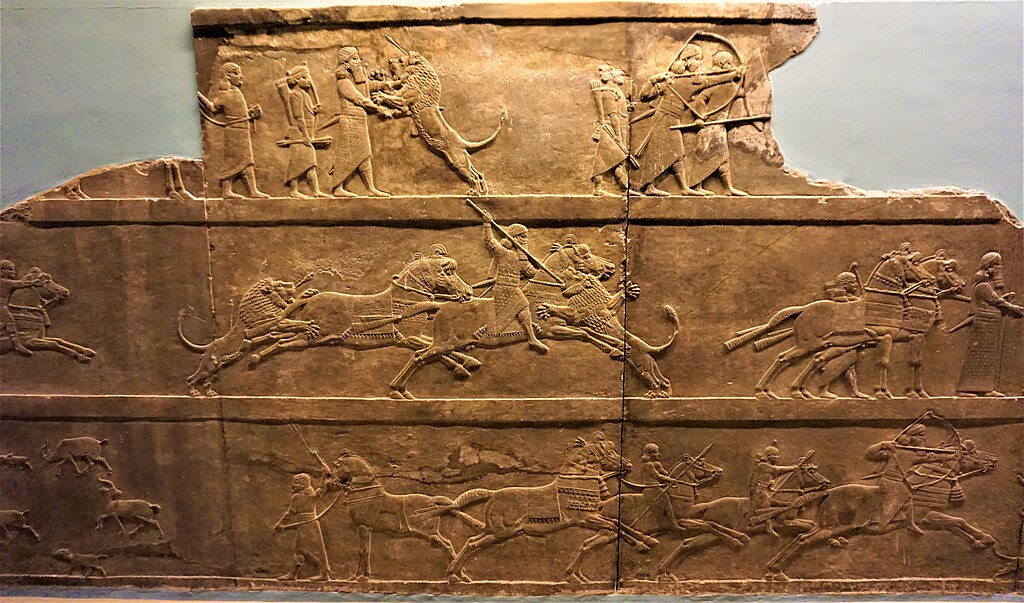
Lion Hunt of Ashurbanipal – 645–635 BC
Lion hunting is evident in Greek mythology and art. Lions were present in the Greek peninsula until classical times.
The prestige of lion hunting is demonstrated in Heracles’ first labor, the killing of the Nemean lion.
Lions were depicted as prominent symbols of royalty, as in the Lion Gate to the citadel of Mycenae.
Today lion hunting is a subject of controversy as currently, the lion is listed as a vulnerable species, and some subspecies are listed as endangered.
Fewer than 20,000 survive in the wild, a reduction of 60% in the last two decades. There were estimated to be 1.2 million lions in 1880.
Sam’ al
Sam’ al flourished in the Iron Age, initially under Neo-Hittites, and by the 920 BC, had become a kingdom.
In the 9th and 8th century BC, it came under the control of the Neo-Assyrian Empire, and by the 7th century BC, it had become a directly ruled Assyrian province.
In 717 BC, Assyria occupied the country under the rule of Sargon II.
Orthostat
An orthostat is a large stone with a more or less slab-like shape that has been artificially set upright.
Later, orthostats were carved with decoration in relief, a common feature of Hittite architecture and Assyrian sculpture, among other styles.
In the latter case, orthostats are large thin slabs of gypsum neatly and carefully formed.
They were intended for use as a wall-facing secured by metal fixings and carrying reliefs, which were then painted.
Lion Hunting Scene – 750 BC
- Name: Lion Hunting Scene – 750 BC
- Created 750 BC
- Original Location: Sakçegözü – current day Turkey
- Culture: Neo-Assyrian Empire
- Material: Stone basalt
- Dimensions: Height: 116 cm; Width: 265 cm; Thickness: 12 cm; Weight: 1100 kg
- Museum: Pergamon Museum
Highlights of the Pergamon Museum
- The Pergamon Altar
- Ishtar Gate
- The Market Gate of Miletus
- Tile – Building Ceramic – Iran 13th – 14th Century
- Lion Hunting Scene – 750 BC
- Islamic Astrolabe
- Islamic Prayer Niche
- Victory Stele of Esarhaddon
- The Desert Place of Mshatta Facade
- Temple of Ashur Water Basin
- Orpheus Mosaic from Miletus
- Lion Hunt Relief from Nimrud
- Ottoman Small Pattern Holbein Knotted Carpet – 16th Century
- Masterpieces of The Pergamon Museum
Earliest hunting scene in prehistoric art
Lion Hunt Reliefs
Hunting lions
~~~
“That men do not learn very much from the lessons of history
is the most important of all the lessons that history has to teach.”
– Aldous Huxley
~~~
Photo Credit: 1) JOM
Popular this Week


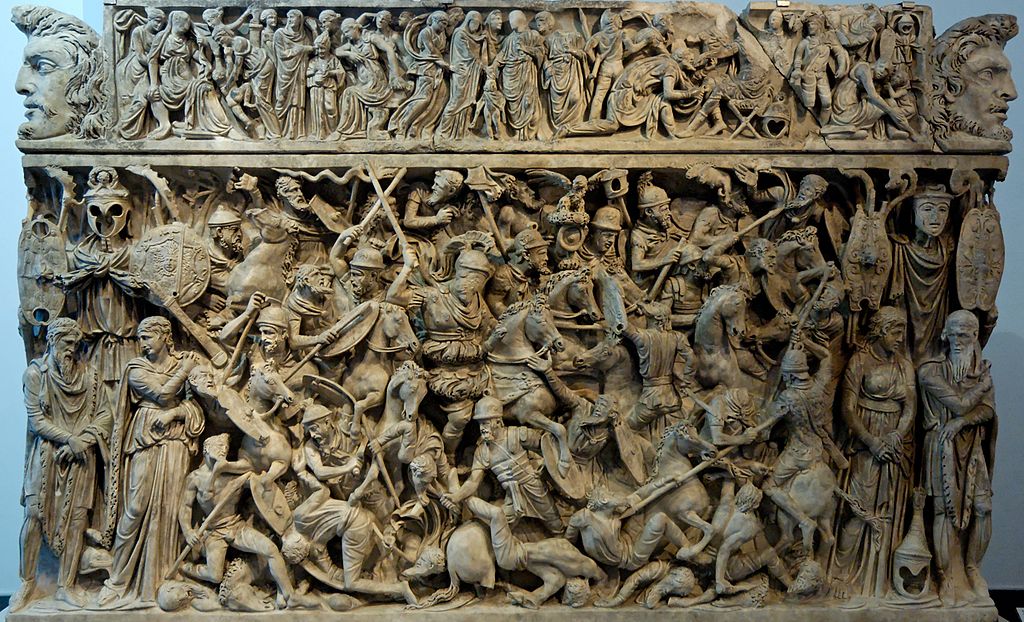



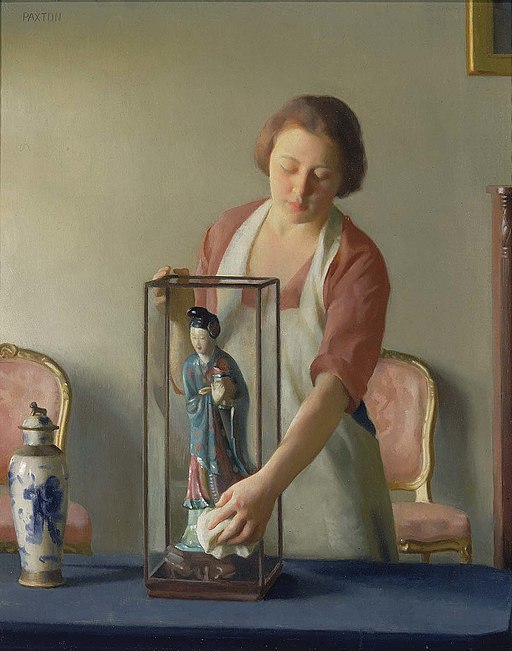

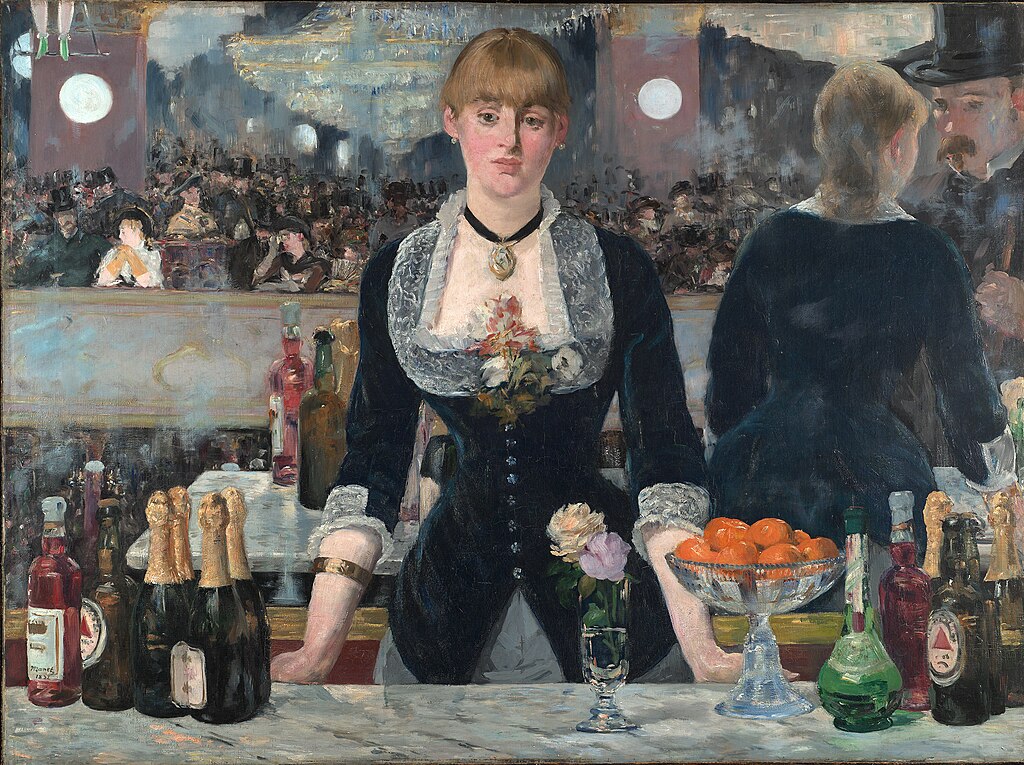 Sponsor your Favorite Page
Sponsor your Favorite Page SEARCH Search for: Search Follow UsJoin – The JOM Membership Program
Sponsor a Masterpiece with YOUR NAME CHOICE for $5
Share this:
- Tweet
